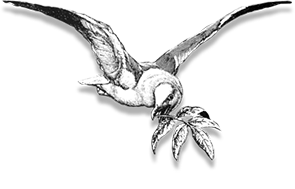'Mice on Toast' Glass Ornament
If you are not currently a member, we invite you to join or renew your membership online.
This hand-blown, hand-painted glass ornament was created exclusively for the Museum of Jurassic Technology and commemorates the ‘Mouse Cures’ display in the Museum’s long-standing exhibit on folk remedies and vulgar knowledge, Tell the Bees... Belief, Knowledge, and Hypersymbolic Cognition. It comes packaged with an informational insert and is approximately 3 1/2" in diameter.
Among the oldest of beliefs in this exhibition, some of which date back sixty centuries to the 3rd or Djoser Dynasty in Egypt, are an aggregation of prescriptions collectively known as mouse cures. Mice are caught and prepared in accordance with multiple recipes for a wide variety of complaints from whooping cough to chilblains. A few of the more common applications of mice are as follows:
Bed wetting or general incontinence of urine can be controlled by eating mice on toast, fur and all.
A flayne Mouse, or made in powder & drunk at one tyme, doeth perfectly helpe such as cannot holde or keepe their water: especially, if it be used three dayes in this order. This is verie trye and often purued.
1597 Lupton
Thousand Notable Things I § 40
* * *
Mouse Pie when eaten with regularity serves as a remedy for children who stammer.
A mouse dissected and applied draweth out reeds, darts and other things that stick in the flesh. Mice bruised and reduced to the consistence of an acopon with old wine cause hairs on the eyebrows. Being eaten by children when roasted, they dry up the spittle. The water in which they have been boiled, helps the quinsey. The ashes of the skinne, applied with vinegar, help the pains of the head.
Pliny Natural History XXX xxx
(1856, V454)


